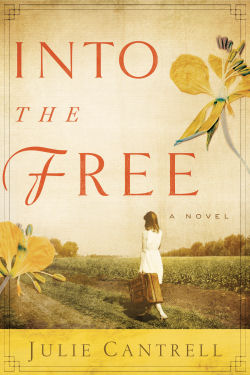|
Imagine
the year is 1915. A band of Gypsies have camped for the night. They are
near a small, southern town called Coatopa, Alabama.
But this is not your ordinary
group of travelers. These migrate with the king of the Romany Nation,
Emil Mitchell. His wife is in labor, struggling to deliver her
fifteenth child.
Rain starts to fall. The king is
pacing outside of the family wagon. A fire smolders in the wet air as
mothers hug their children, try to keep quiet, and offer prayers to
save their queen. Her name is Kelly Mitchell, but some call her Callie.
Spelling doesn’t matter, as most of them don’t know how to read. Or
write. But they do know when something isn’t right, and the screams
coming from the queen’s wagon give them reason to worry.
King Emil is distraught. He
loves his wife and now realizes she is dying. He is desperate. Afraid.
He climbs onto the seat of the wagon and urges the horses to pull hard
and fast.
He heads straight to the nearest
home he can find, but no one can help. He offers money, jewels, goats.
Still, no one can help. He does this again. And again. And again,
offering everything he owns to everyone he finds, but no one can save
the queen.
Finally, he reaches a city.
There, in Meridian, Mississippi, he finds doctors. He offers
everything, knowing friends will pitch in. Five thousand dollars. Ten
thousand. It doesn’t matter. It is too late.
The king arranges a service for
his beloved bride, and to his surprise, the Mississippi townsfolk
welcome them. For days they wait as more than 20,000 Romany travelers
make their way to this town. The university band joins them, playing
music as a funeral wagon rolls through the streets, carrying the Gypsy
queen from the church to the burial site on Rose Hill.
*****
From Fact to Fiction
The fascinating story is one I
had never heard as a child growing up in Louisiana. But when I found an
old Meridian Dispatch newspaper article about this
event, I was hooked.
I wanted to know more about the
travelers and about Kelly Mitchell. So I started reading, questioning,
and researching this incredible bit of history. I wanted the queen to
be known. I wanted her story to be told.
But as I dug deeper, I was
disappointed to find limited information. And much of what had been
recorded was contradictory or exaggerated. Despite many reports, it was
difficult to find a complete story.
So, I decided to take those
kernels of truth and fill in the rest. That’s how my debut novel, Into
the Free, was born.
|
Into
the Free
The Romany travelers are now a
smaller thread within a complex tale about a girl named Millie
Reynolds. She grows up in a fictional town called Iti Taloa,
Mississippi. She befriends a few of the travelers who caravan through
town each year to pay homage to their fallen king and queen. And the
story goes from there.
It is a novel, which means it is
completely a fictional tale, and it’s ultimately a story about hope,
faith, and forgiveness. But it all started in a Gypsy camp in 1915,
where a woman was in labor in a remote field near Coatoapa, Alabama.
Curious?
It’s long been said that truth
is stranger than fiction, so it’s no surprise that many novelists pull
ideas from real events. Lisa Wingate’s Dandelion Summer
is stacked around factual details about our nation’s moon missions in
the 1960s. Terri Blackstock’s Intervention series stems from her
journey through her own daughter’s drug addiction, and Francine
Rivers’s The Atonement Child is based on her
personal abortion experience.
Writers are told time and time
again to “write what you know.” I agree whole-heartedly with that slice
of advice, and I certainly followed it in Into the Free.
But I’m adding to it. I say, write about what you know . . . or
what you want to know more about. After all, there’s no better fuel for
a fire than curiosity. It will keep you coming back to the keyboard
night after night.


|